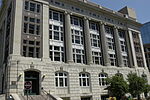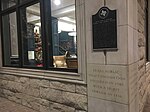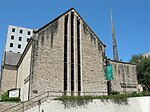Cathedral of Saint Mary (Austin, Texas)
19th-century Roman Catholic church buildings in the United StatesChurches in Austin, TexasChurches on the National Register of Historic Places in TexasCity of Austin Historic LandmarksNational Register of Historic Places in Austin, Texas ... and 5 more
Recorded Texas Historic LandmarksRoman Catholic Ecclesiastical Province of Galveston–HoustonRoman Catholic cathedrals in TexasRoman Catholic churches completed in 1884Roman Catholic churches in Texas

Saint Mary's Cathedral is the cathedral parish of the Catholic Diocese of Austin located in Austin, Texas, United States. It was listed on the National Register of Historic Places in 1973, as St. Mary's Cathedral.
Excerpt from the Wikipedia article Cathedral of Saint Mary (Austin, Texas) (License: CC BY-SA 3.0, Authors, Images).Cathedral of Saint Mary (Austin, Texas)
East 10th Street, Austin
Geographical coordinates (GPS) Address Phone number Website External links Nearby Places Show on map
Geographical coordinates (GPS)
| Latitude | Longitude |
|---|---|
| N 30.271111111111 ° | E -97.74 ° |
Address
Saint Mary Cathedral
East 10th Street 203
78701 Austin
Texas, United States
Open on Google Maps










